Juniper JN0-683 Data Center Professional (JNCIP-DC) Exam Exam Practice Test
Data Center Professional (JNCIP-DC) Exam Questions and Answers
What are two ways in which an EVPN-signaled VXLAN is different from a multicast-signaled VXLAN? (Choose two.)
You are asked to deploy 100 QFX Series devices using ZTP Each OFX5120 requires a different configuration. In this scenario, what are two components that you would configure on the DHCP server? (Choose two.)
Exhibit.
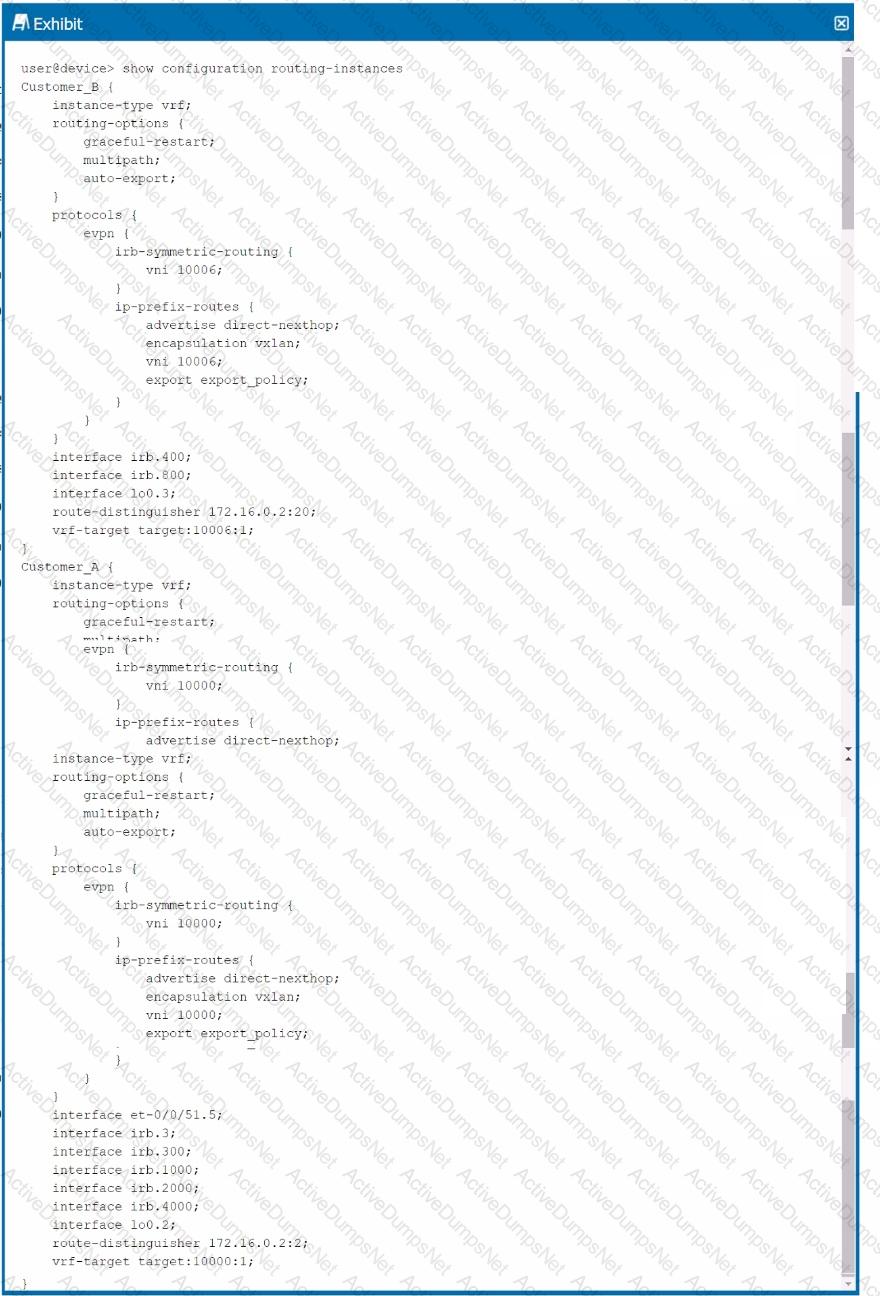
Referring to the configuration shown in the exhibit, assume that there is no external router present, and that the configuration is fabric-only.
Which two statements are true about the example configuration? (Choose two.)
Exhibit.
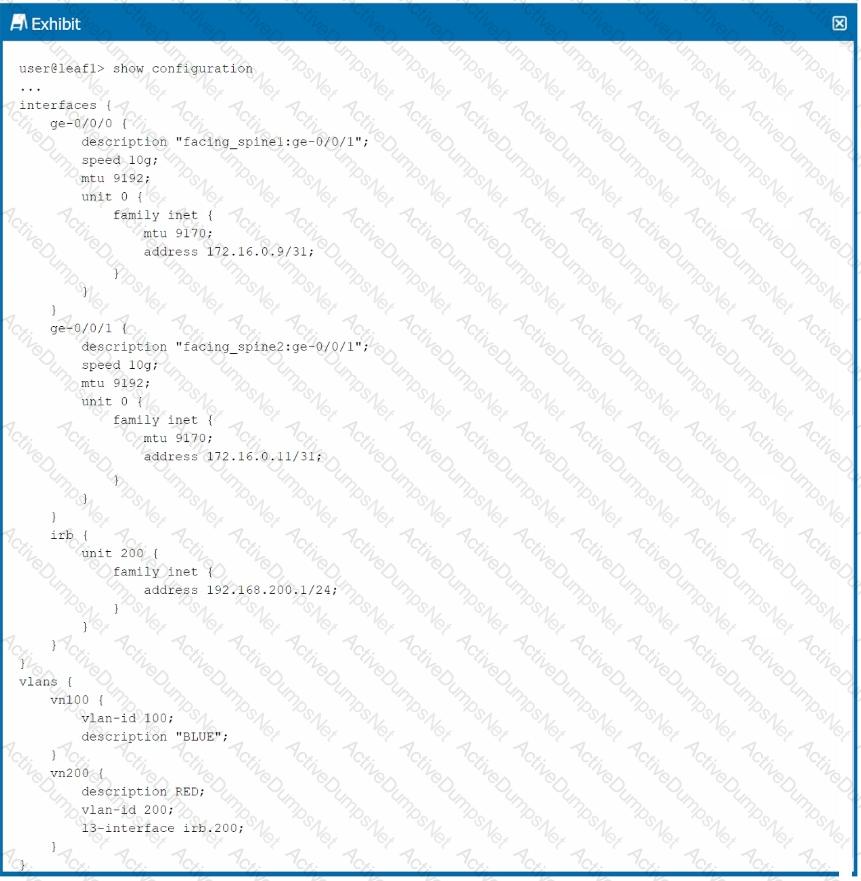
Host A is connected to vlan 100 on lead. Host B is connected to vlan 200 on leaf1. Host A and Host B ate unable to communicate. You have reviewed the touting and your hosts have the correct default route (.1)
Referring to the exhibit, which two commands will solve the problem? (Choose two.)
Why is a designated forwarder required in a multihomed CE-to-PE VXLAN environment using EVPN signalling?
A local VTEP has two ECMP paths to a remote VTEP
Which two statements are correct when load balancing is enabled in this scenario? (Choose two.)
You are preparing an sFlow monitoring system configuration.
In this scenario, what Information will be included in the datagram sent to the sFlow collector? (Choose two.)
You are asked to interconnect two of your company's data centers across an IP backbone. Both data centers require Layer 2 and Layer 3 connectivity. In this scenario, which three actions would accomplish this task? (Choose three.)
Which two statements are true about IP fabrics using unnumbered BGP? (Choose two.)
Exhibit.
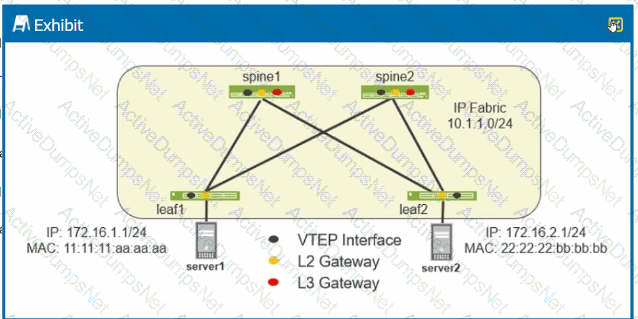
You have implemented an EVPN-VXLAN data center. Device served must be able to communicate with device server2.
Referring to the exhibit, which two statements are correct? (Choose two.)
Exhibit.
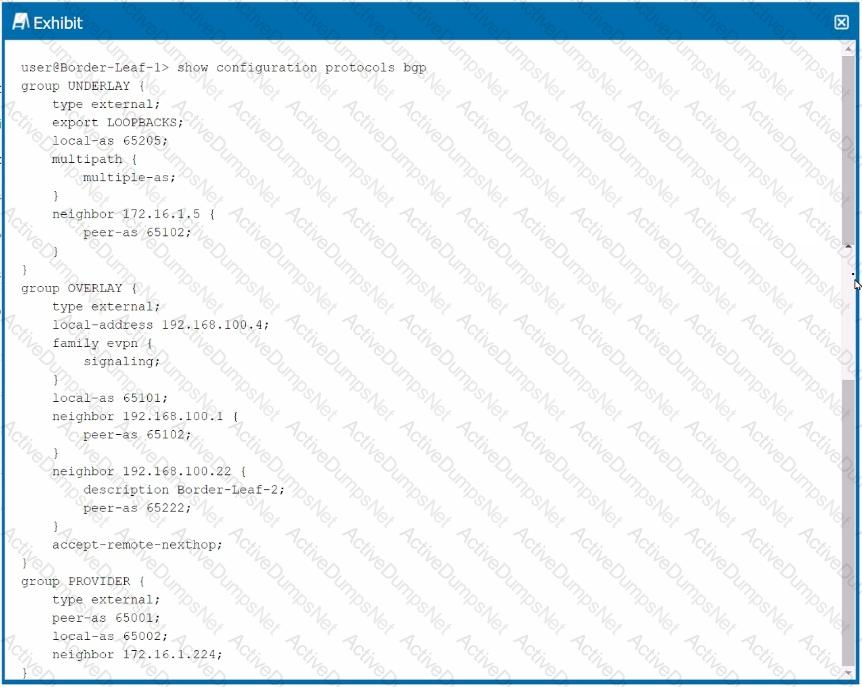
You are troubleshooting a DCI connection to another data center The BGP session to the provider is established, but the session to Border-Leaf-2 is not established. Referring to the exhibit, which configuration change should be made to solve the problem?
You are asked to build redundant gateways in your EVPN-VXLAN environment, but you must conserve address space because these gateways must span across seven PES. What should you implement on the PEs lo satisfy these requirements?
You are deploying a Clos IP fabric with an oversubscription ratio of 3:1.
In this scenario, which two statements are correct? (Choose two.)
Exhibit.
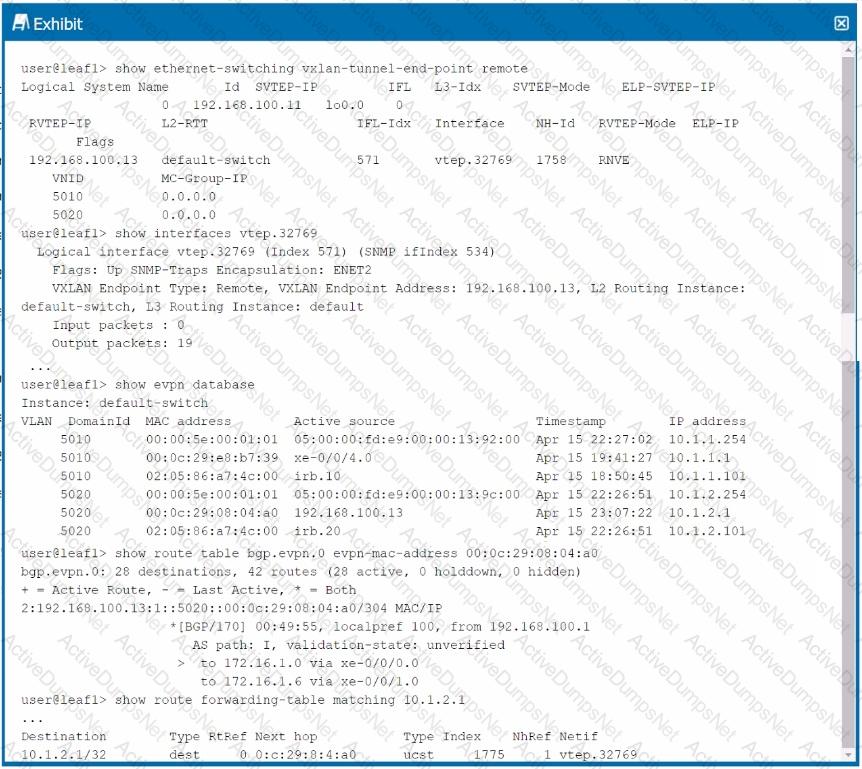
Referring to the exhibit, Host1 (10.1.1.1) is failing to communicate with Host2 (10.1.2.1) in a data center that uses an ERB architecture. What do you determine from the output?
You are asked to interconnect Iwo data centers using a method that provides EVPN Type 2 connectivity, is highly scalable, and limits VXLAN tunnels between border leaf devices. What will satisfy these requirements?
Exhibit.
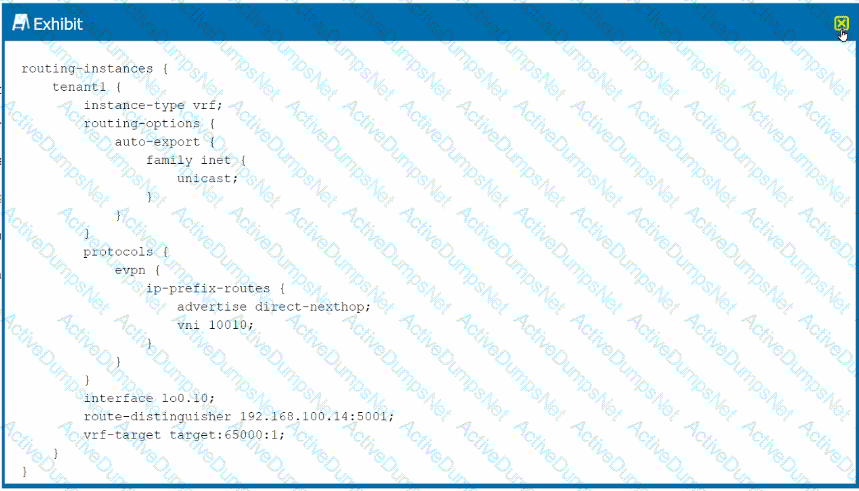
You want to enable the border leaf device to send Type 5 routes of local networks to the border leaf device in another data center. What must be changed to the configuration shown in the exhibit to satisfy this requirement?
Which three statements are correct about symmetric IRB routing with EVPN Type 2 routes? (Choose three.)
You are asked to interconnect two of your company's data centers across the IP backbone. Both data centers have their own unique IP space and do not require any bridging. In this scenario, which two actions would accomplish this task? (Choose two.)
You are deploying a new network lo support your Al workloads on devices that support at least 400 Gbps Ethernet. There is no requirement for any Layer 2 VLANs in this network. Which network architecture would satisfy this requirement?
